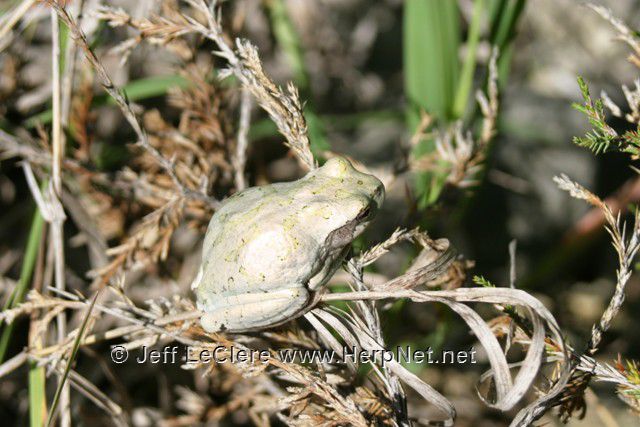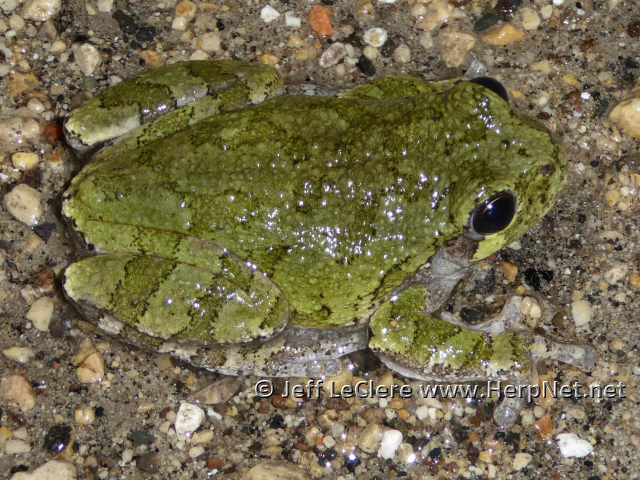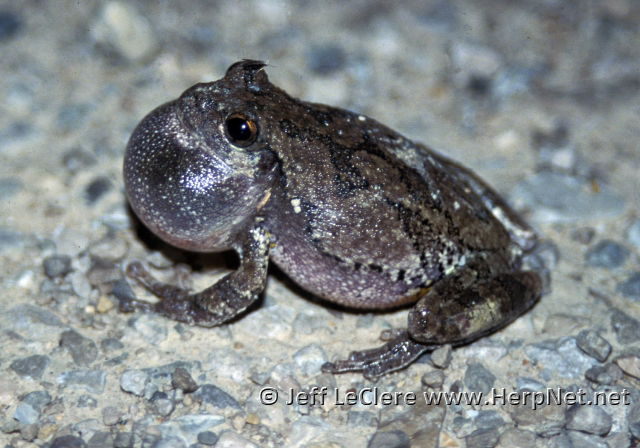Eastern Gray Treefrog (Hyla versicolor)
Alternate names: Dryophytes versicolor; Gray Treefrog (some authorities use the common name Gray Treefrog for this species, however, I choose to use the former name Eastern Gray Treefrog to avoid confusion with Cope’s Gray Treefrog).
by Jeff LeClere
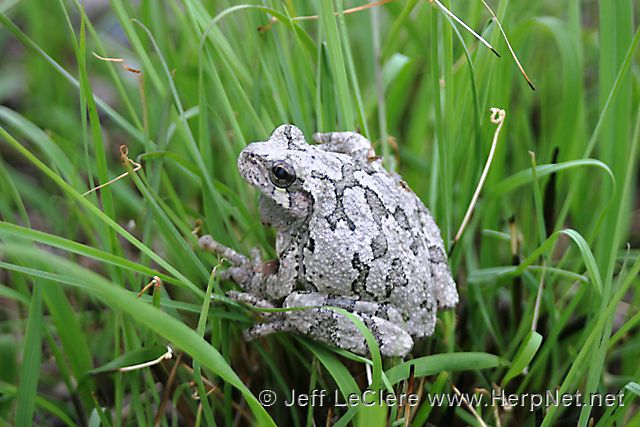
Eastern gray treefrog, Hyla versicolor, calling.
Status
Species of Greatest Conservation Need. A valid fishing license is required to possess this species for bait or food. We would like reports from the northwest half of Iowa. Try to obtain an audio recording for species verification as a photo cannot be used to identify this species.
Description
The eastern gray treefrog is one of two look alike species of treefrog in Iowa. This species is about 2 3/8 inches long snout to vent. They can change from a bright green to gray (almost brown) in seconds. Unlike Cope’s gray treefrogs, eastern gray treefrogs have a pattern on their back and these markings are bordered by black (but see below). The belly is white and usually unmarked. The throat may be dark in males. The insides of the thighs and legs are washed with bright orange or yellow. They have relatively rough skin compared to Cope’s gray treefrogs and large toe pads. The large toe pads distinguish them from several other species of Iowa anurans.
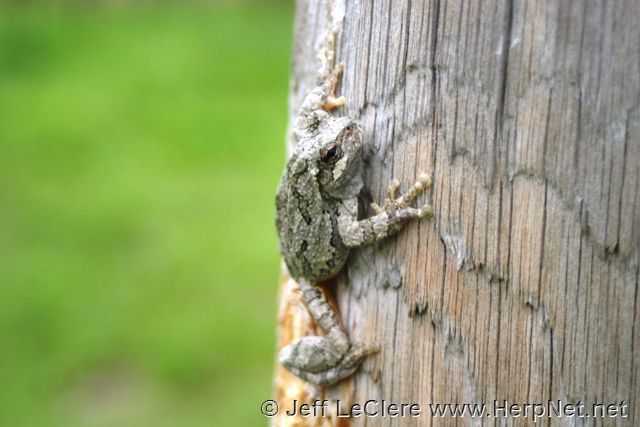
The eastern gray treefrog is identical in appearance to the Cope’s gray treefrog. There is (as of now, anyway) no reliable way to distinguish these frogs based on appearance on a consistent basis. The pattern on the backs of each species is unreliable as they both may or may not have a pattern; observations based on positive identification indicates that one may have a pattern more often than the other. The only steadfast differences between these two species is the number of chromosomes (the Cope’s gray treefrog is a diploid, the eastern gray treefrog is a tetraploid), the eastern gray treefrog has larger red blood cells than the Cope’s gray treefrog, and differences in the advertisement calls of the males (see habits).
Subspecies
There are no subspecies of Hyla versicolor recognized.
Range
The eastern gray treefrog is probably found throughout the entire state. Because Cope’s gray treefrog and eastern gray treefrogs were once considered the same species, historic records of this frog are unclear.
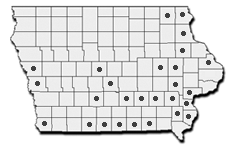
Habitat
Eastern gray treefrogs are reported to prefer more wooded habitats than the Cope’s gray treefrog. I typically do not observe Cope’s gray treefrogs inside heavily wooded forests. Both species may be found together in forest edges and at night around lighted buildings in towns. They hang around street lamps or other lights at night. They are commonly seen on windows and sides of cabins or rural homes at night. They remain hidden in little crevices or other loose shelters during the day.
Habits
This treefrog is well known for its climbing ability. It can scale glass with the use of its toe discs. They breed from May to July. They use permanent or semi-permanent wetlands to breed. The males call from vegetation in the water. The male’s call is the best way to distinguish this treefrog from the Cope’s gray treefrog. The eastern gray treefrog’s call has a slower trill, and sounds much more musical and bird-like. Tadpoles have a red tipped tail, unique among Iowa’s other tadpoles. Tadpoles transform in 2 to 2 1/2 months. They are always bright green when they transform and will remain so for some time.
Color change in adults varies depending on temperature, activity level, and color of surroundings. Adults migrate to summer feeding habitats after they mate. They may call periodically from their perches throughout the summer, especially in evening or after rains. This species is reported to call from higher perches than Cope’s gray treefrog. They overwinter under shelters of bark, leaves, rocks or logs. These frogs prevent ice crystals from forming in their organs by changing glycerol into glucose and circulating through the organs. The remaining water in the body is allowed to freeze. The frog is basically frozen until spring.
The Cope’s gray treefrog and the eastern gray treefrog were considered the same species until relatively recently. The Cope’s gray treefrog was found to be diploid (normal numbers of chromosomes) and the eastern gray treefrog is a tetraploid (twice the number of chromosomes).
Food
Eastern gray treefrogs catch insects and other invertebrates for food. They are quite acrobatic catching flying insects in mid air. They hang around street lamps or other lights at night catching insects that are attracted to the light.
